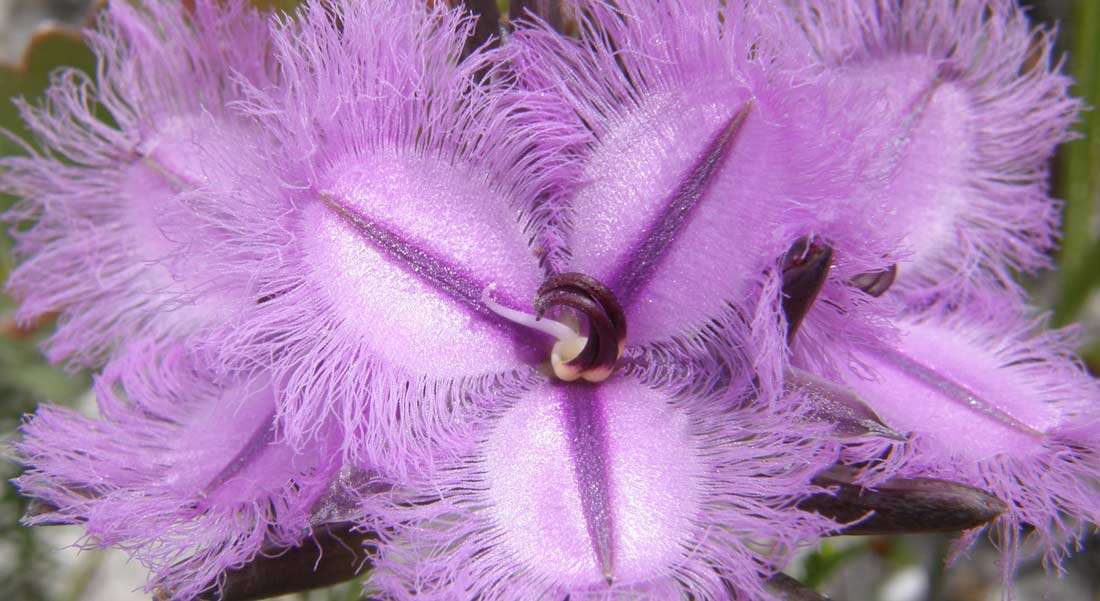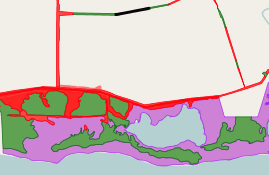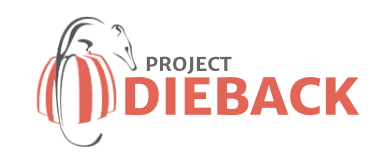Plant Disease Data
The following information is provided as a guide to what plant disease information is available in DIDMS and how to in part use this information.
Disease Point Data
Since 1982, the Department of Biodiversity, Conservation and Attraction Vegetation Health Services (VHS) have been analysing field samples in a laboratory for presence or absence of Phytophthora disease, and recording these results into a Phytophthora database.
There are five species of Phytophthora data collated by VHS that have been converted into a GIS format and uploaded to DIDMS as Baselayers. The datasets are updated to June 30 each calendar year. The Phytophthora meta data report outlines scale and accuracy of the VHS data presented in DIDMS.
Disease points across all land, course scale; includes private property data, and the DIDMS user cannot zoom in beyond a certain scale. The data will disappear when the user zooms in beyond the privacy scale setting.
Disease points on public land only, fine scale; includes positive VHS data collected on public lands and can be zoomed to a very high resolution. The Disease points on public lands baselayers and associated met data reports are available for download within DIDMS by registered users.

Soil borne Phytophthora:
- P. cinnamomi
- P. multivora
- P. inundata
- P. nicotianae
- P. pseudocryptogea
Airborne Armillaria:
6. Armillaria luteobubalina
Soil borne Phytophthora
These Phytophthora spread via soil movement by:
- Vector Spread – humans (Roads, tracks, trails, rail, utility corridors, mining, and associated economic, recreational, cultural activities) and animals
- Autonomous spread – root to root contact and hydrology surface and subsurface flow (Rivers, streams, run-off from sheading slopes).
Airborne Armillaria
Armillaria data is collated by VHS separate to the Phytophthora database. A luteobalina is a native species of plant pathogen which is predominately dispersed naturally by wind. Spores are released from mushroom fruiting bodies during wet summer periods, autumn or spring. The disease normally becomes established when wind transported spores settle on freshly damaged plant wounds. The disease can also spread by transporting infected plant material such as vegetation stuck to slashers, and transporting infested mulch. Once established, the disease then moves root to root.

Uncertainty
It is important to note that VHS “negative” sample points do not necessarily confirm the absence of Phytophthora. There is a degree of uncertainty with “negative” sample points which can result in a “false negative”. “False negative” uncertainty is reduced, but not eliminated, when a registered Phytophthora Dieback Interpreter undertakes the sampling. The chances “positive” samples resulting in a “false positive” are less likely when appropriate sampling techniques and hygiene are applied.
Phytophthora cinnamomi interpreted data
The professional standard for Phytophthora Dieback disease mapping is specific to P. cinnamomi, is set by the Department of Biodiversity, Conservation and Attraction and applied through “Registered Phytophthora Dieback Interpreters”. P. cinnamomi disease status data only meets these standards when collected by a registered Phytophthora Dieback Interpreter.

Disease status categories
The Registered Phytophthora Dieback Interpreter uses standardised diagnostic techniques supported by VHS sampling to map the following disease status categories for P. cinnamomi:

(Department of Biodiversity, Conservation and Attraction (2015), Phytophthora Dieback Interpreter Procedures for land managed by the department. WORKING DRAFT 2, Forest and Ecosystem Management Division)
- Infested
Symptoms of Phytophthora Dieback disease are visible - Uninfested
An area that a registered interpreter has determined may be free of plant disease symptoms that indicate the presence of the pathogen P. cinnamomi - Uninterpretable
Areas of natural undisturbed vegetation where susceptible plants are too few for interpretation of Phytophthora Dieback. - Not Yet Resolved
Phytophthora occurrence diagnosis cannot be made because of inconsistent evidence. - Temporarily Uninterpretable
A naturally vegetated area that has had disturbance and likely to recover from that disturbance in the short term. - Excluded
An area of high disturbance where natural vegetation is unlikely to recover.
Uncertainty
Phytophthora Dieback interpretation data within DIDMS may NOT be comprehensive, up to date, vary in scale and quality. Phytophthora Dieback disease Information is considered current up to 12 months within its survey date capture for Uninfested areas and 3 years for Infested areas. Areas that have not been mapped MAY still be infested, until stated otherwise by a “Registered Phytophthora Dieback Interpreter”. . Refer to DIDMS Data Disclaimers section regarding appropriate use of this data.
Disease Confidence Mapping P. cinnamomi to June 2008
The DIDMS Baselayer: “Disease Confidence Mapping P. cinnamomi to June 2008” data. The Phytophthora disease boundaries and categories portrayed in this dataset are a composite of survey data collected at varying times over 30 years. The dataset comprises various scales of survey intensity and various levels of interpretation confidence. The extent of infestations are underestimated, as not all areas have been surveyed and disease boundaries are likely to extend into mapped disease free areas since surveys were conducted. If a User zooms beyond a datasets scale view setting within DIDMS it will DISAPPEAR from view to part protect the data being used beyond its accuracy of scale capture. The data is not current and Disease Confidence Mapping should be viewed with the overlayed DIDMS “Disease points on Public Lands” dataset. Refer to DIDMS Data Disclaimers section regarding appropriate use of this data.

-
Extreme
-
Very High
-
High
-
High-Moderate
-
Moderate
Risk Assessment – Soilborne Phytophthora
Through Project Dieback, this risk based approached draws on understanding values, assets, threats, hazards, management objectives, management strategies and feasibility assessment.
The hazard component of this risk model was the impetus to develop a GIS P. cinnamomi Hazard Dispersion tool to help link the hazard of a known threat to a susceptible biodiversity value.
Risk = Threat x Vulnerability (Susceptibility + Hazard) x Consequence (Impact)
Components of this risk model for the purposes of soil borne Phytophthora planning are defined as:
- Risk
The chance that a Plant Disease threat will result in the impact of vulnerable values/assets to the point where the consequence results in goal/objective failure. - Threat
known location, extent and severity of the plant disease on an area and its proximity to uninfested susceptible areas. - Susceptibility
level of a species, community, ecosystem, or landscape resilience to plant disease impact. - Hazard
pathways and activities that link a known plant disease locations to an uninfested susceptible area (includes environmental hazard: wet soil, soil type, slope, landform, climate) - Vulnerability
the sum of the susceptibility and hazards in an area. - Impact
impact of the disease on a plant, community, ecosystem, landscapes, species composition, structure, and function. This impact is then translated to human value being a consequence.
Register for a free DIDMS account
This project is supported by funding from the Western Australian Government's State NRM Program


